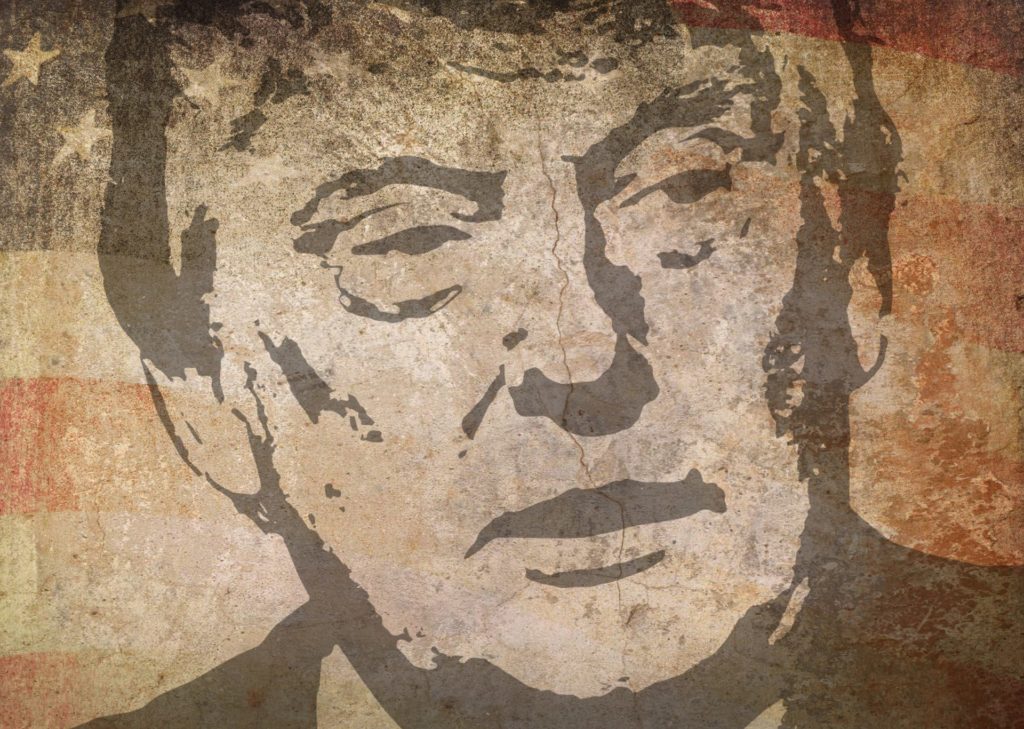When the clock struck midnight on July 6, the “trade war” between China and the U.S. officially began. After months of menacing rhetoric from the White House and responses of stoic assertiveness from Beijing, a 25% tariff levied on $34 billion worth of Chinese imported goods went into effect.
China responded swiftly, also levying a 25% tariff on $34 billion worth of imported American goods. China says the U.S. has started the “largest trade war in economic history,” and that its actions violate the rules of the World Trade Organization.
President Trump, meanwhile, has doubled down on what he calls a Chinese/U.S. trade relationship that is “no longer sustainable.” He says that additional tariffs on as much as $16 billion worth of Chinese goods could be levied as soon as the end of this month.
The trade war between the world’s two largest economies went into effect on the same day that the Bureau of Labor Statistics released jobs data for June, in which 213,000 new jobs were added, beating estimates of 195,000. More people entered the workforce, however, causing the unemployment rate to tick higher to 4.0%.
In the wake of competing news, stock markets have ticked higher with the Dow Jones Industrial Average up 135 points as of this writing. This comes after the Dow posted three consecutive weeks of ending the week at a loss. It appears that positive job figures have allayed fears of what the impact of a trade war could be.
At least for now.
Leaders from a broad scope of American industries, from carmakers to soybean producers to whiskey distillers to steel workers, have expressed dismay over the tariffs. In essence, their products could be priced out in the global market, which could lead to mass layoffs, bankruptcies, and perhaps even a full-blown economic downturn.
American oil producers, which have enjoyed somewhat of a resurgence over the past couple of years due to OPEC production cuts, are also in danger of being affected. China’s imports of American oil have surged over the past year and a half, climbing from $100 million per month at the beginning of 2017 to nearly $1 billion per month.
But with the two countries now in the midst of a trade war, China could very turn to a country like Iran to feed its oil demand. This would send the price of oil higher — which, in theory at least, would benefit oil producers, even American ones. But without being able to sell to China, which has become its second largest consumer behind Canada, American producers could very well be scrambling.
(Meanwhile, the U.S. has vowed to block Iran from exporting any oil, with one Trump official stating that the goal was to get the number of “countries importing Iranian crude down to zero,” adding a layer of intrigue to what may become a precarious global economic situation.)
Trump’s actions are meant to turn the tide in what he believes is a growing economic imbalance between the two countries. Chinese exports to the U.S. have long outpaced U.S. exports to China — according to the U.S. Census Bureau, as far back as 1985. The trade deficit between the two countries was $350 billion for 2017 and has already surpassed $150 billion for 2018.
In addition to the tariffs, Trump is also planning on limiting Chinese investment in U.S. tech firms and also restricting exports of tech devices to China, fearful that Chinese tech is catching up to American tech, perhaps even surpassing it in some areas.
There’s no way to know for sure what the outcome of the trade war might be — whether it will somehow bring about a trade balance between the U.S. and China, or whether it will send the global economy into another recession. Commerce Secretary Wilbur Ross stated just this week that the United States is prepared to follow through with tariffs and other isolationist policies, with no concern for how far markets may tumble. History tells us that even without the trade war, markets are due to slip into a bear market sooner or later.
Most observers agree that one thing’s for certain: As with any war, there will be losers on both sides.

